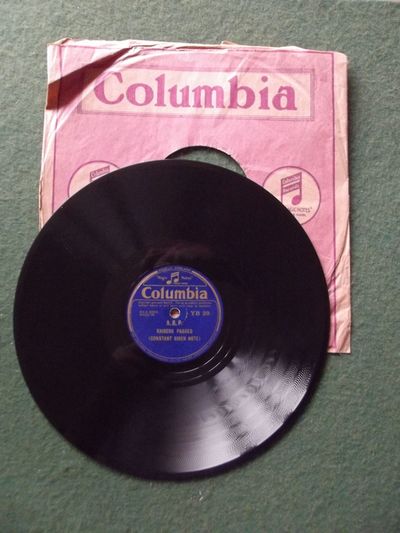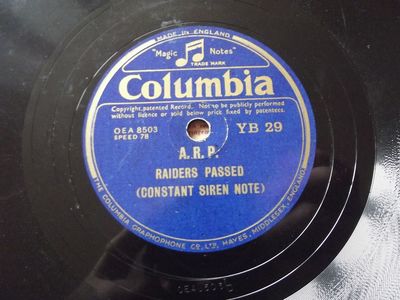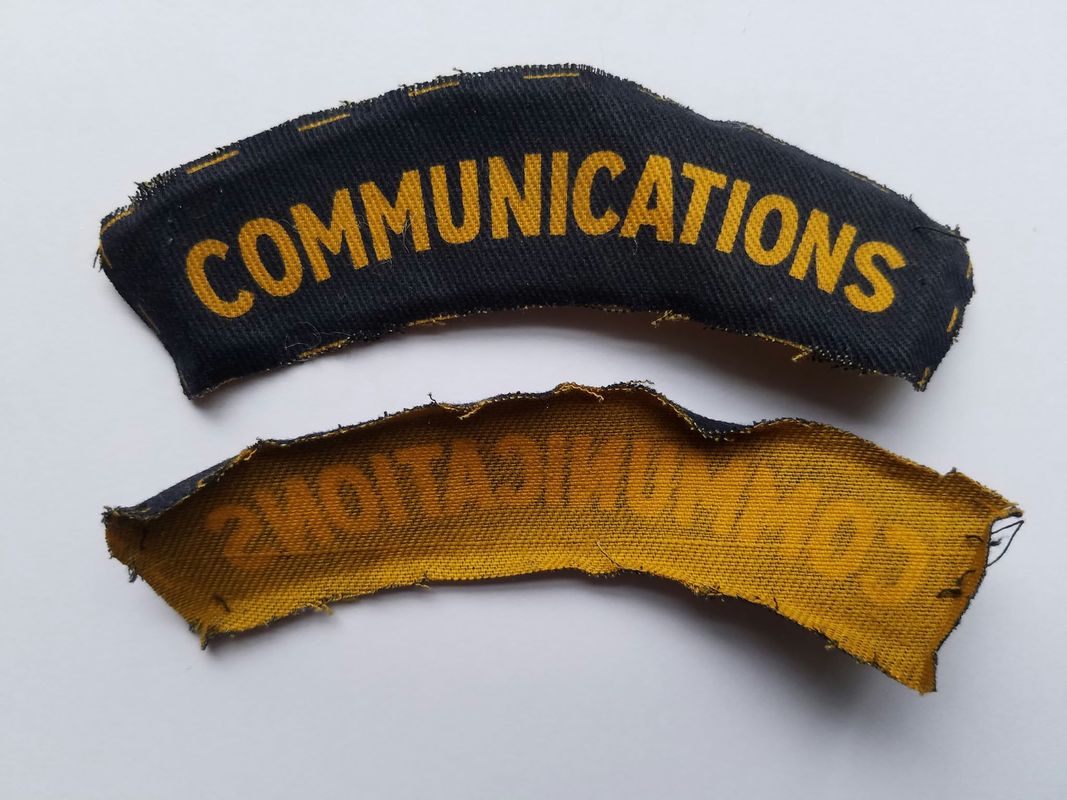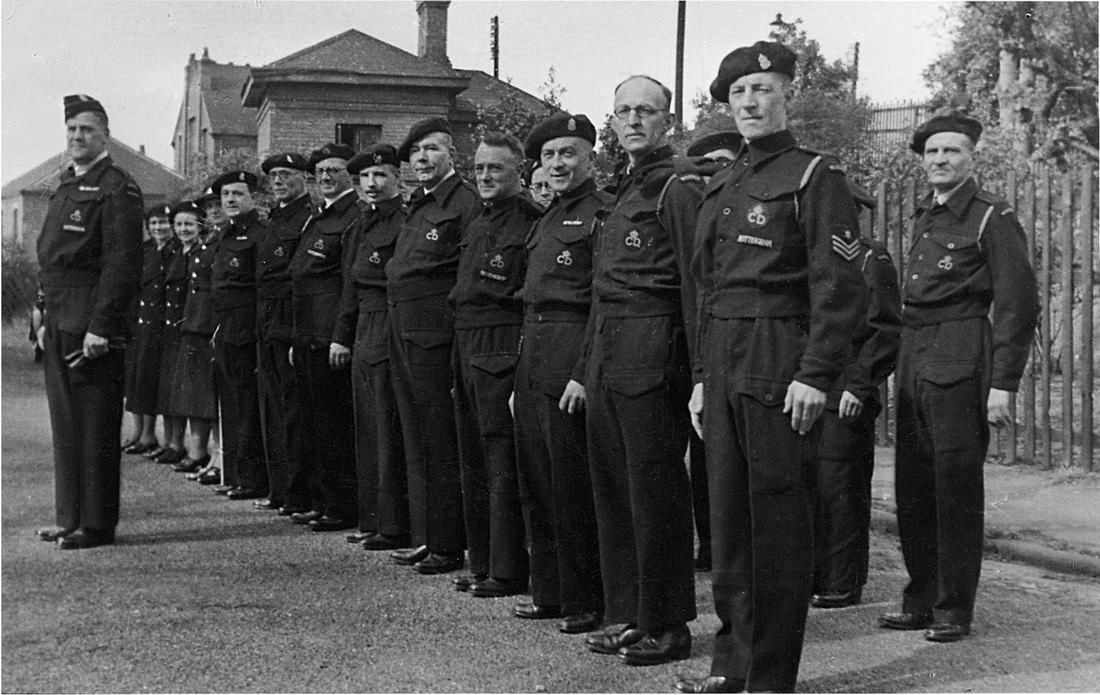|
An interesting 78 RPM record that has the two main siren noises - "Action Alert" and "Raiders Passed". The record was possibly used by factories to play over the Tannoy or may be a post-war record with sound effects for theatre plays etc.
0 Comments
These "Communications" shoulder titles were picked up by a friend at War & Peace Show. The printed manufacture is identical to those made during the war. However, there is no mention of this shoulder title in any of the files, bulletins or booklets I have seen. It could be a very late war edition and if you have any further information please do contact me.
An interesting parade photograph of Civil Defence members in Lenton, Nottinghamshire. Interesting to see that only a few have the area marking of 'NOTTINGHAM' under the CD breast badge - and it is unbordered. The officer has a yellow-piped side cap.
Images courtesy of Lenton Times. This portrait shows Edith Essery from Hartleopol in her Civil Defence ambulance uniform. Either an ambulance attendant or driver her ARP Pattern 71 serge uniform has an unofficial local rank badge. Two (narrow) yellow bars in the usual rank insignia for an officer (lowest senior officer rank) but these are much thicker than usually seen. The cap badge does not seem to be the silver ARP badge but is probably a locally produced example featuring a large 'A'.
Images from Hartlepool History Then And Now. Warden Taylor notes down an incident report in his wardens' post.
At the War & Peace Revival Show in Kent a few of us manned an ARP Post and helped tell the story of the wardens to many interested punters within the Home Front Village. An amazing amount of time and effort when into the displays. And by Jove was it hot... |
Please support this website's running costs and keep it advert free
Categories
All
Archives
June 2024
|
|
|
Copyright © 2018–2024
|






 RSS Feed
RSS Feed